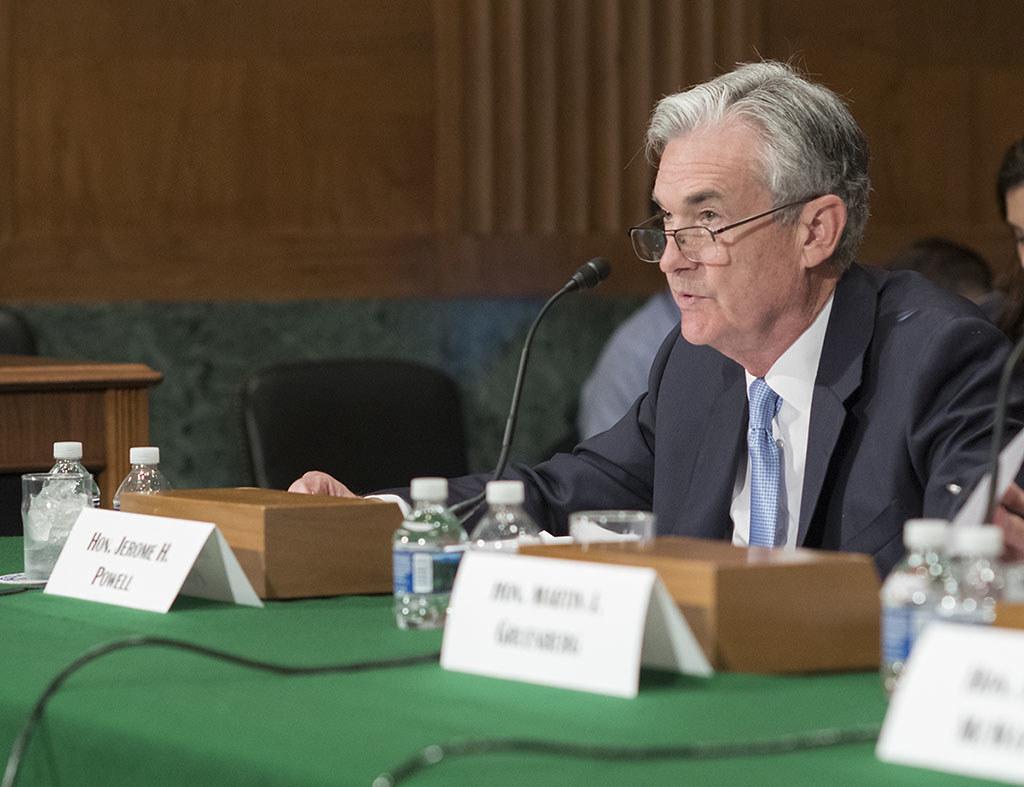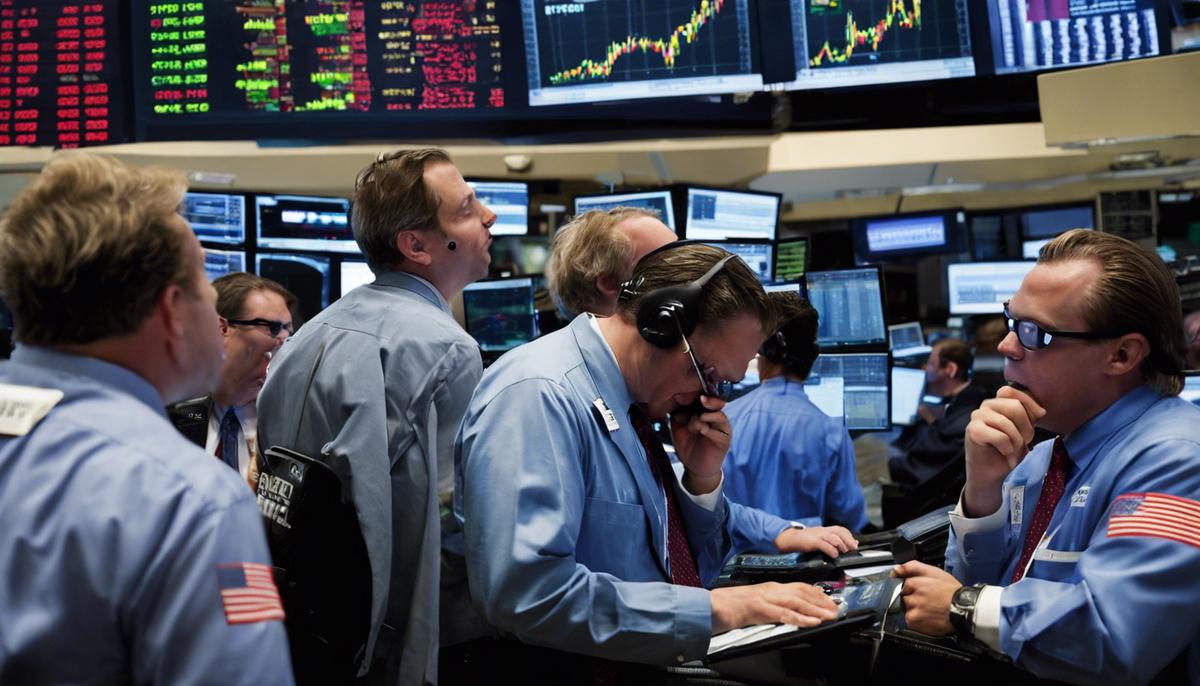The Federal Reserve recently made the decision to maintain the interest rates steady, keeping them range-bound between 5.25% and 5.5%. This move sustains interest rates at their highest levels since 2001. This decision comes in the wake of fluctuating and somewhat stubborn inflation rates, which, although they’ve dropped from a high of 9.1%, still hover above the Fed’s ideal target rate of 2%. The persistence of higher-than-desired inflation is a key factor driving the Federal Reserve’s latest move.
Jerome Powell, the Fed Chair, underscored the importance of this decision with a firm commitment towards the ongoing battle against inflation. He stated, Inflation has eased notably over the past year but remains above our target rate of 2%.
Powell’s remarks reveal a staunch position of the Federal Reserve in maintaining the current interest rate range. The intention behind this steadfast approach is clear: to ensure continued progress in reducing inflation to more manageable levels.
Powell further elaborated on the future course of action, indicating that the Federal Reserve is prepared to maintain the current target range for the federal funds rate for longer if appropriate.
This demonstrates the central bank’s readiness to adjust its strategy as needed, cementing its resolve in reaching its inflation targets. By keeping the rates unchanged, the Federal Reserve aims to carefully monitor incoming data and economic indicators to make more informed decisions going forwards. This approach speaks to a broader strategy of cautious optimism and vigilance, with an eye on sustainable economic growth and stability.

While the Federal Reserve’s decision to keep interest rates steady shows determination in the fight against inflation, it undoubtedly impacts the economy’s immediate future. The high borrowing costs that come with elevated interest rates are a necessary pill to swallow in cooling off an overheated market and bringing down inflation. However, they also risk slowing economic growth.
The Fed’s projections for three rate cuts by the end of 2024 offer some hope, suggesting a targeted approach towards a more favorable economic climate. But lowering rates too quickly could backfire, reigniting inflation and undermining the progress made so far. As Powell emphasizes, patience and comprehensive data analysis are key.
Powell’s commitment to relying on concrete economic evidence before making adjustments highlights a prudent and necessary strategic depth in these uncertain times. It acknowledges the complexity of the economic puzzle, with shifting pieces that don’t always fit neatly together. Sequential interest rate cuts, while potentially stabilizing in the long term, could signal premature economic recovery or worsen inflation if implemented without sufficient data.
The broader implications of the Fed’s stance and future moves touch every corner of the economy. While consumers may feel the pain of high interest rates affecting mortgages and personal investments, the Fed’s patience could foster an environment of stronger, more resilient economic growth.
Powell’s foresight in acknowledging the unpredictable nature of economic recovery measures serves as a reminder of the delicate balance policymakers must strike. It’s a commitment to safeguarding the economy’s health without succumbing to short-term pressures or risking long-term stability for temporary gains.
As the economy navigates inflationary pressure and interest rate challenges, the FOMC’s judicious approach asserts a guarded optimism. The roadmap may be uncertain, but armed with data and a vigilant eye on sustainable economic health, the Fed’s strategy could steer the economy towards calmer waters with an appropriate mix of caution and diligence. The balancing act between quelling inflation and fostering economic growth continues, with every decision scrutinized for hints of what the future may hold.
The recent declaration from the Federal Reserve to hold interest rates steady has led to a noticeable reaction in the financial markets and among general consumer sentiment. The immediate market response reveals a cautious yet optimistic landscape. For instance, the S&P 500, a key indicator of market health, has shown resilience, hinting at investors’ tempered faith in the economy’s foundations. This signal suggests that, although interest rates remain high, robust job gains and consumer spending may keep the economy afloat.
Consumer sentiment, mirroring market trends, displays a mix of concern and confidence. On one hand, the prospect of high borrowing costs raises worries over potential downturns and the possibility of a recession. High borrowing costs could slow economic activities, putting a brake on growth and possibly tipping the scales towards a monetary slowdown.
On the other hand, indicators such as unexpected job gains and an economy that has shown steadiness despite projected slowdowns feed into a current of optimism. While borrowing rates stir worries about economic contractions, underlying strength in employment lends a counter-narrative of resilience. This dual sentiment captures a populace and investor base grappling with the immediate discomforts of elevated rates against a backdrop of potential longer-term stability.
Regarding future rate cuts, the sentiment is divided, influenced by differing expectations and political overtones. The Fed’s cautionary approach sparks debates amid cooling inflation numbers and solid economic data, underscoring a community divided over the timing and necessity of easing borrowing costs. Speculations arise that political implications surrounding the Presidential election year might color the Federal Reserve’s decisions, further complicating the narrative and stoking mixed feelings about future financial strategies.
Amidst this whirlwind of perspectives, one storyline emerges: the recognition that economic forecasting and policy maneuvering navigate through murky waters clouded with unpredictability. Falling squarely within this dynamic is the public and market response – a complex mixture of apprehension for what high interest rates mean for immediate economic visibility, juxtaposed against a cautious optimism grounded in substantive economic factors like employment figures and reconcilable consumer spending.
In synthesizing these multifaceted reactions, it’s evident that the road ahead, bolstered by speculative future rate cuts, is rife with uncertainty. Each data point, be it market performance or consumer confidence metrics, stitches into a larger economic tapestry reflecting an environment thrumming with potential yet hedged by cautious footsteps of monetary policymakers. The overarching sentiment, swaying between concern and confidence, embroiders a fascinating narrative of an economy at a crossroads, underpinned by hopeful resilience but shadowed by looming concern over borrowing costs and economic buoyancy.
As public response oscillates with each news cycle and market sentiment rides the waves of economic data revelations, the collective eye remains fixed on how the Federal Reserve navigates these turbulent tides – a balancing act in full display, with high stakes in hand.

Meet Writio, the ultimate AI content writer! This article was crafted with precision by Writio.
Leave a Reply